Abstract
Procaine and several general anaesthetics block production of action potentials in frog skeletal muscle fibres by a single mechanism of action, which suggests that there might be a common basic mechanism of action on neurones in the central nervous system. Procaine or cinchocaine given alone to intact white mice produced “excitement” and convulsions but when given 60 min after phenobarbitone they caused central nervous depression. Large, convulsant doses of procaine or cinchocaine abolished the righting reflex in mice previously treated with small, subanaesthetic doses of phenobarbitone. In contrast, leptazol only antagonized the depression produced by phenobarbitone. When applied directly to neuronally isolated slabs of cat cerebral cortex, procaine or pentobarbitone reduced the sizes of the surface negative and surface positive responses to direct electrical stimulation of the cortex. Leptazol had the opposite effect. When given systemically, procaine only increased the electrical threshold for the surface positive response recorded from the isolated slab; ether either increased or did not change this threshold, and leptazol either decreased or did not change it. These results are consistent with the suggestion that general and local anaesthetics have a fundamentally similar action on neurones in the central nervous system.
Full text
PDF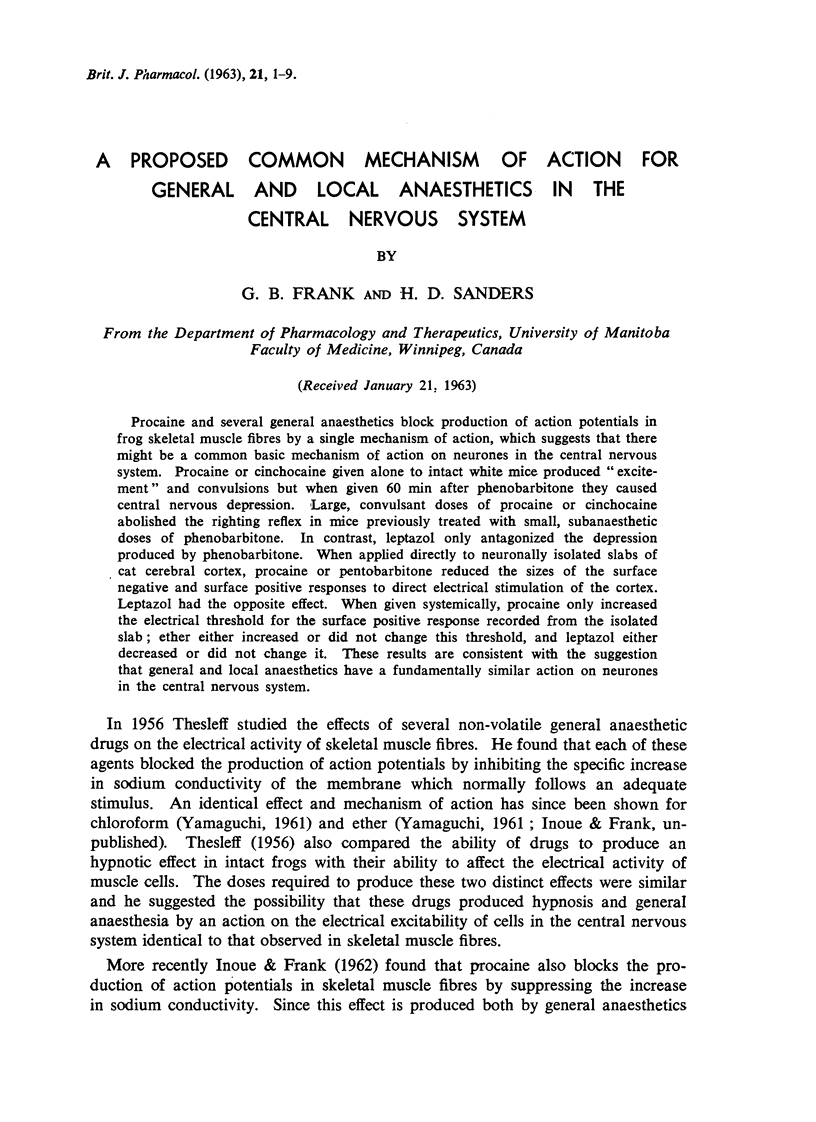
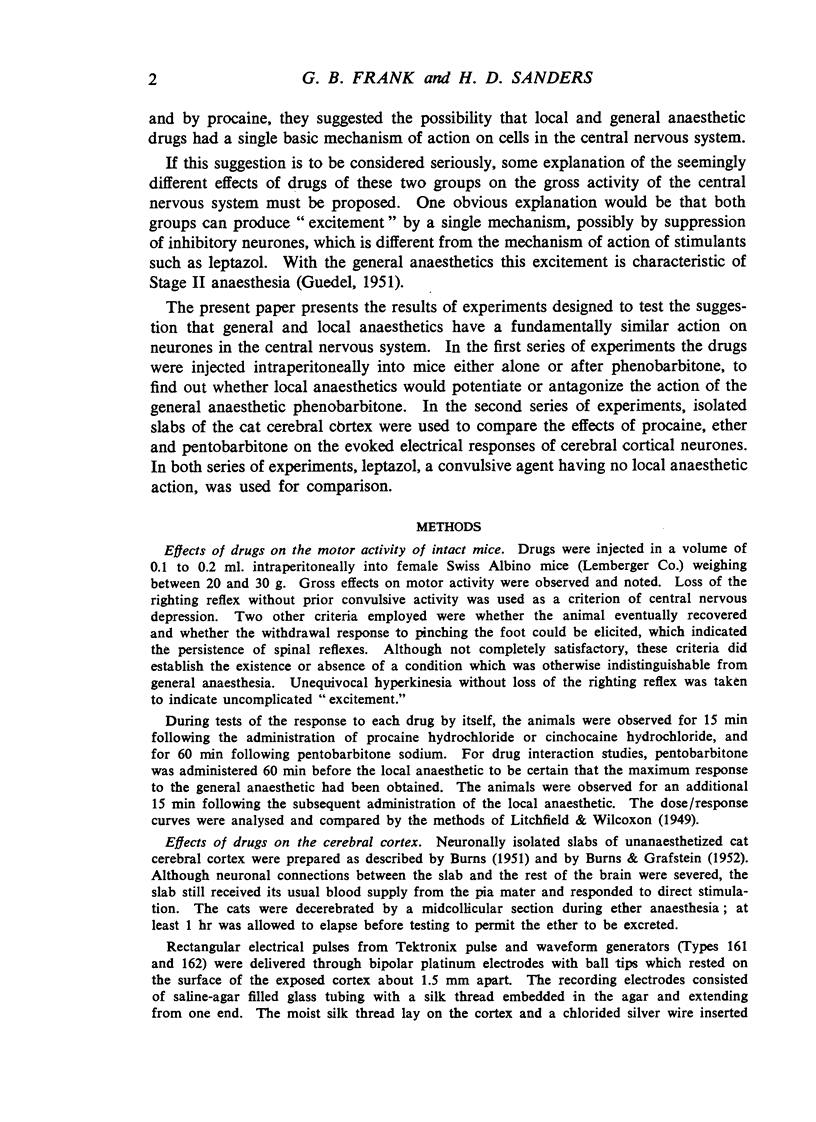
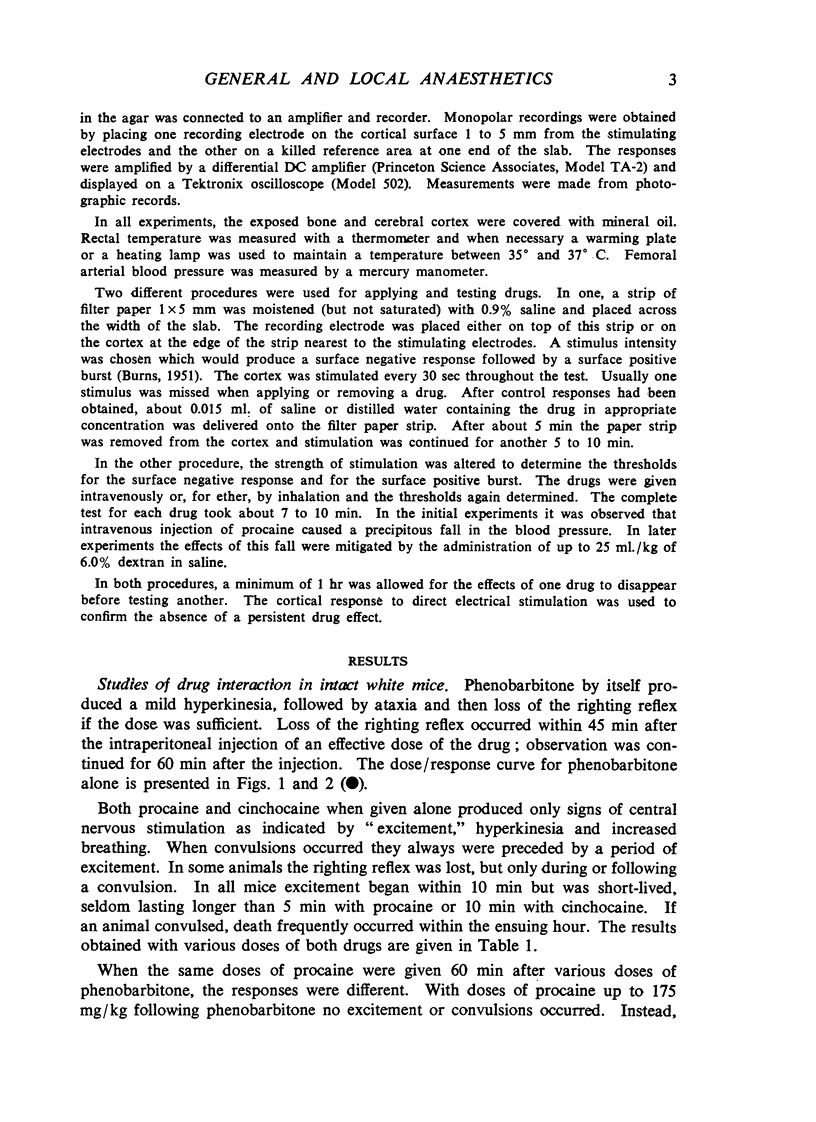
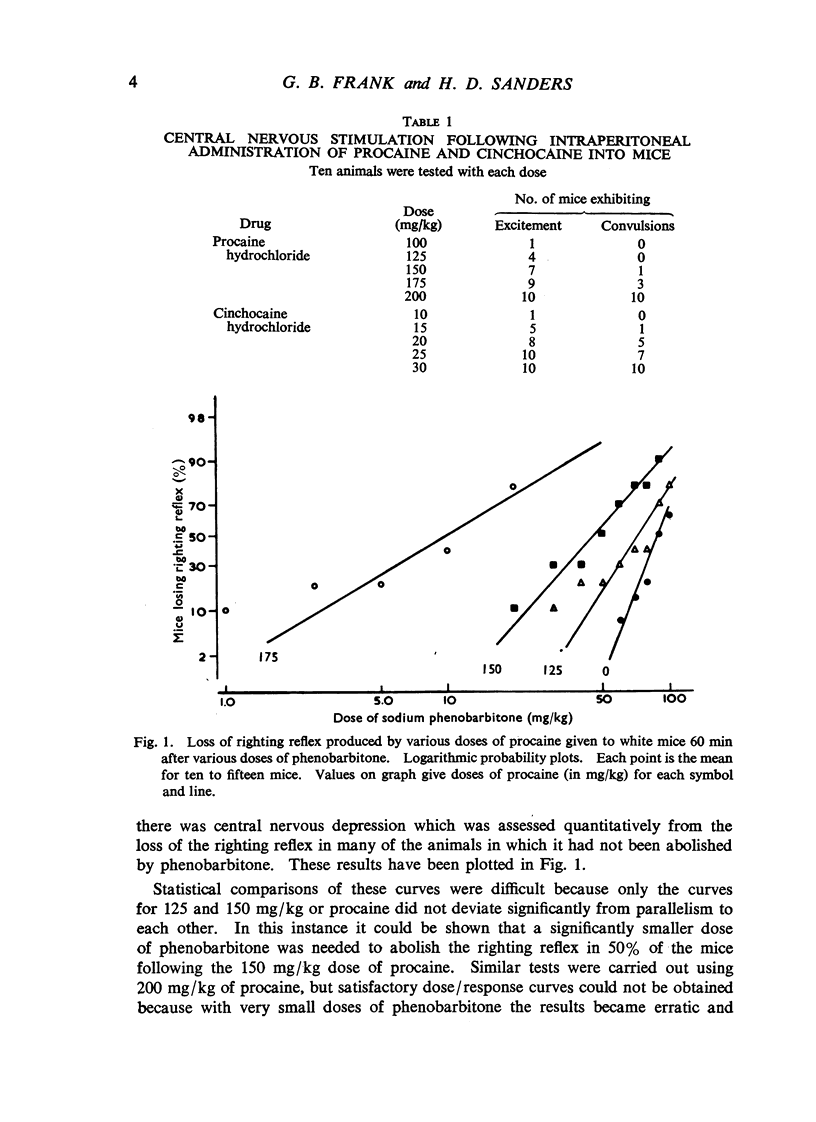
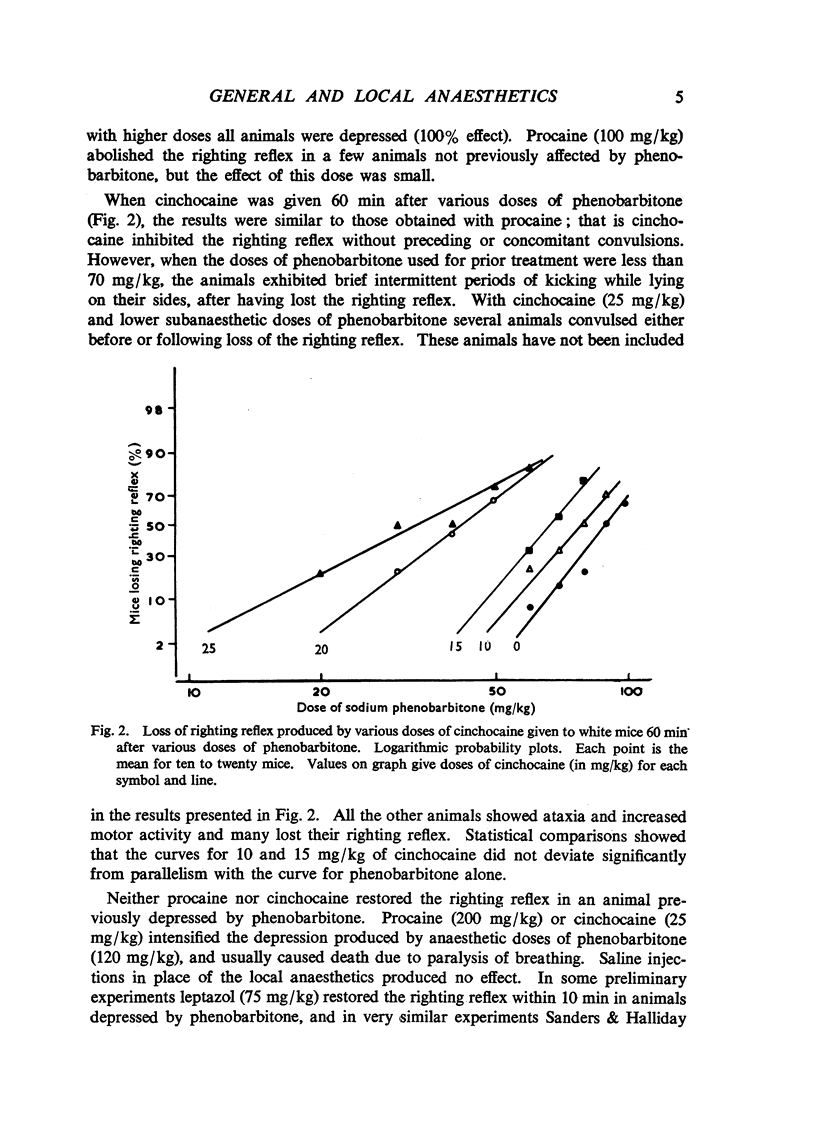
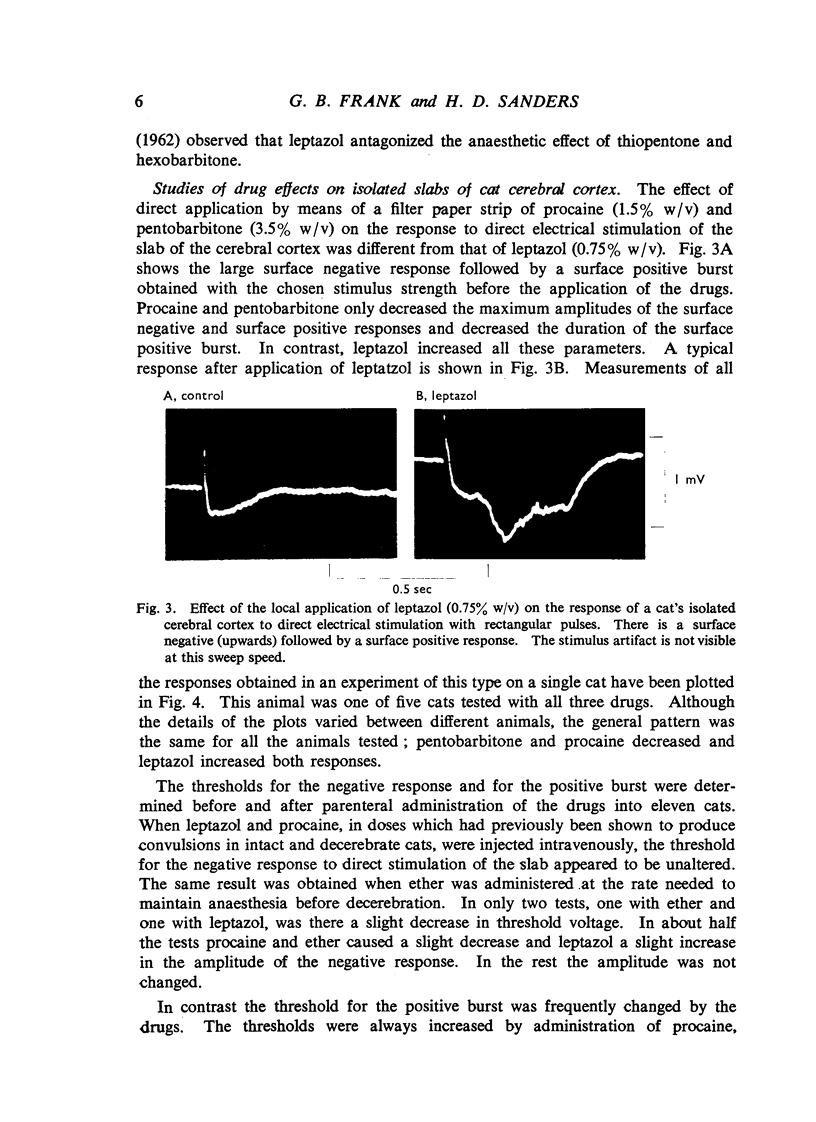
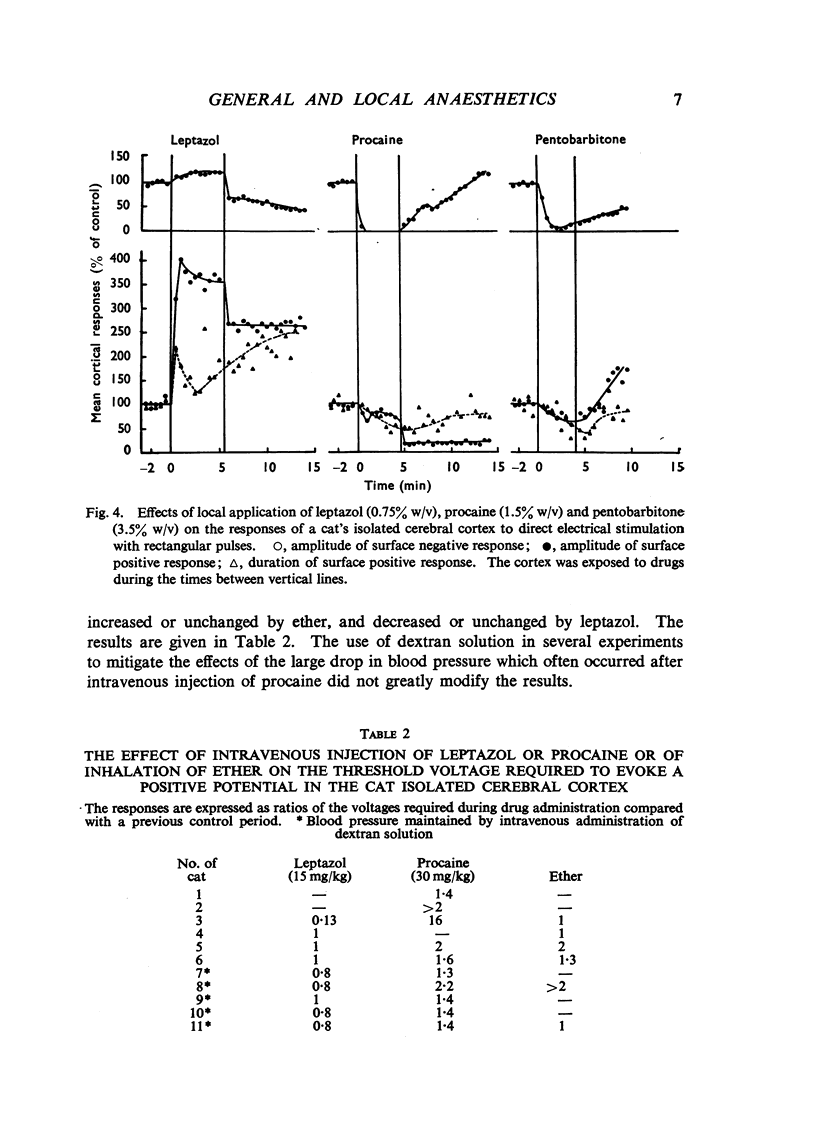
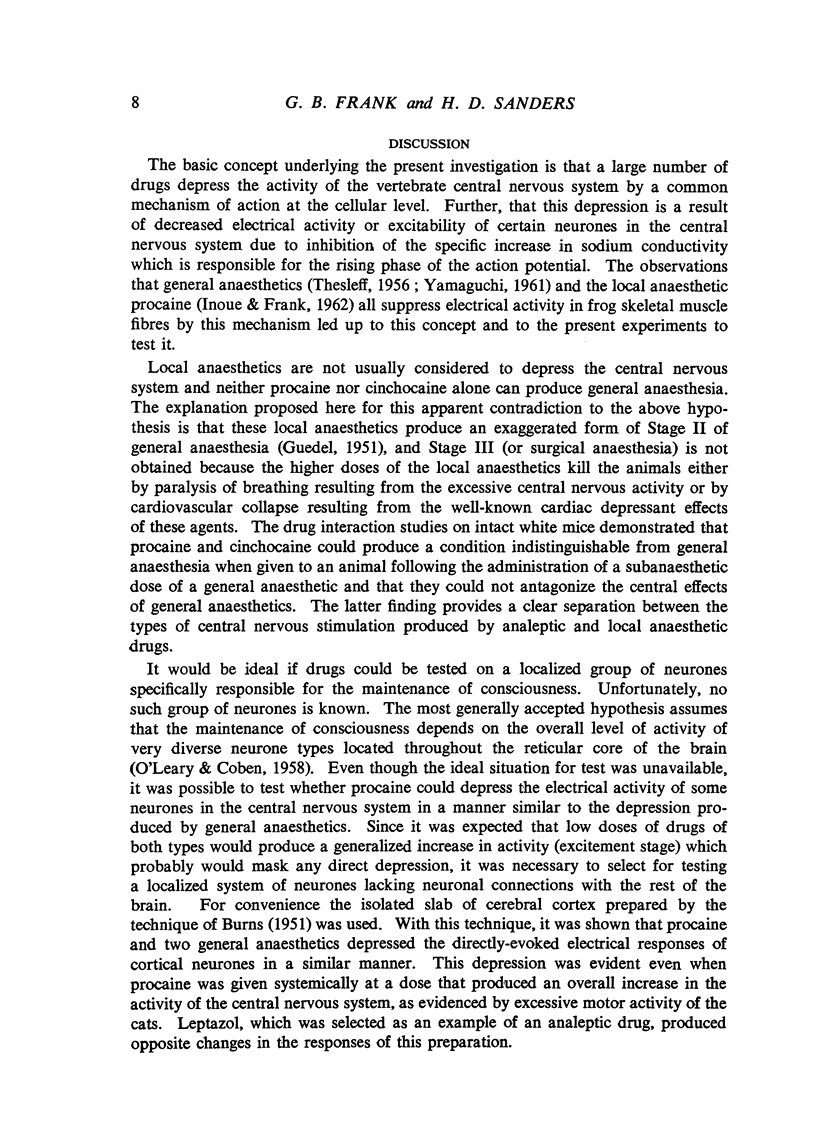
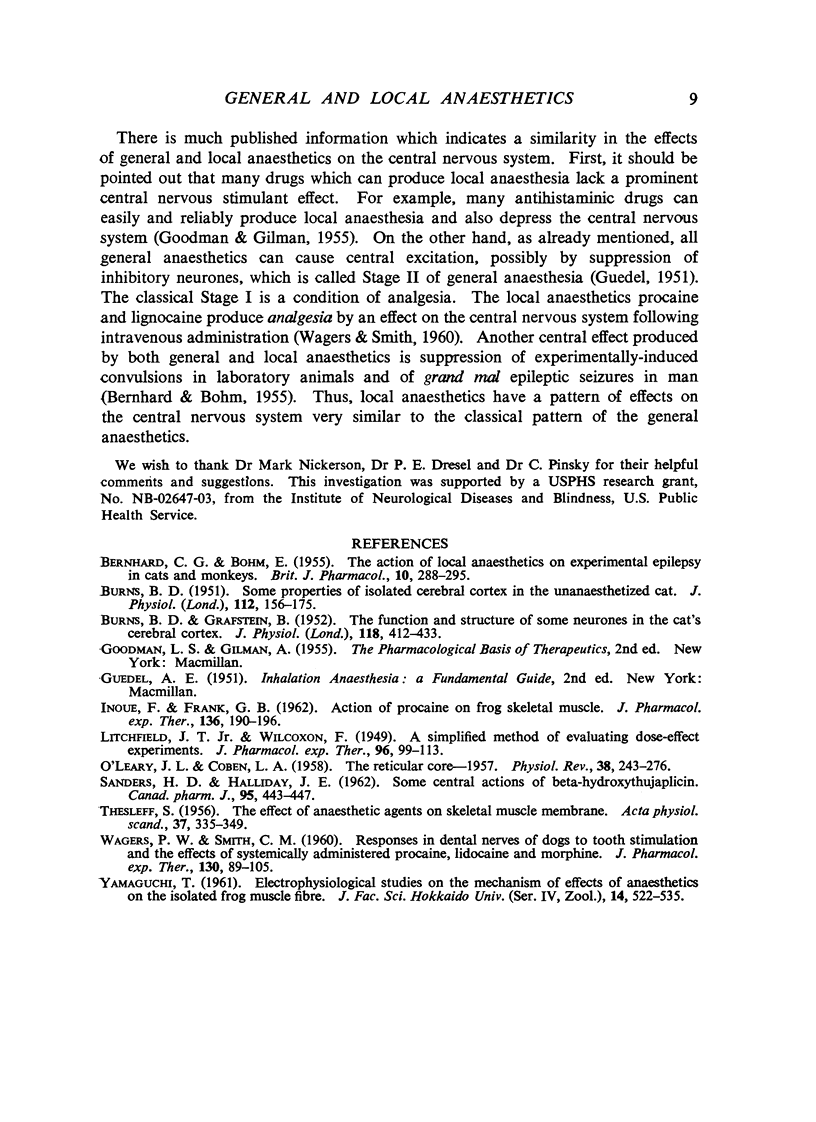
Selected References
These references are in PubMed. This may not be the complete list of references from this article.
- BERNHARD C. G., BOHM E. The action of local anaesthetics on experimental epilepsy in cats and monkeys. Br J Pharmacol Chemother. 1955 Sep;10(3):288–295. doi: 10.1111/j.1476-5381.1955.tb00872.x. [DOI] [PMC free article] [PubMed] [Google Scholar]
- BURNS B. D., GRAFSTEIN B. The function and structure of some neurones in the cat's cerebral cortex. J Physiol. 1952 Nov;118(3):412–433. doi: 10.1113/jphysiol.1952.sp004805. [DOI] [PMC free article] [PubMed] [Google Scholar]
- BURNS B. D. Some properties of isolated cerebral cortex in the unanesthetized cat. J Physiol. 1951 Jan;112(1-2):156–175. doi: 10.1113/jphysiol.1951.sp004517. [DOI] [PMC free article] [PubMed] [Google Scholar]
- O'LEARY J. L., COBEN L. A. The reticular core; 1957. Physiol Rev. 1958 Apr;38(2):243–276. doi: 10.1152/physrev.1958.38.2.243. [DOI] [PubMed] [Google Scholar]
- THESLEFF S. The effect of anesthetic agents on skeletal muscle membrane. Acta Physiol Scand. 1956 Nov 5;37(4):335–349. doi: 10.1111/j.1748-1716.1956.tb01369.x. [DOI] [PubMed] [Google Scholar]
- WAGERS P. W., SMITH C. M. Responses in dental nerves of dogs to tooth stimulation and the effects of systemically administered procaine, lidocaine and morphine. J Pharmacol Exp Ther. 1960 Sep;130:89–105. [PubMed] [Google Scholar]


